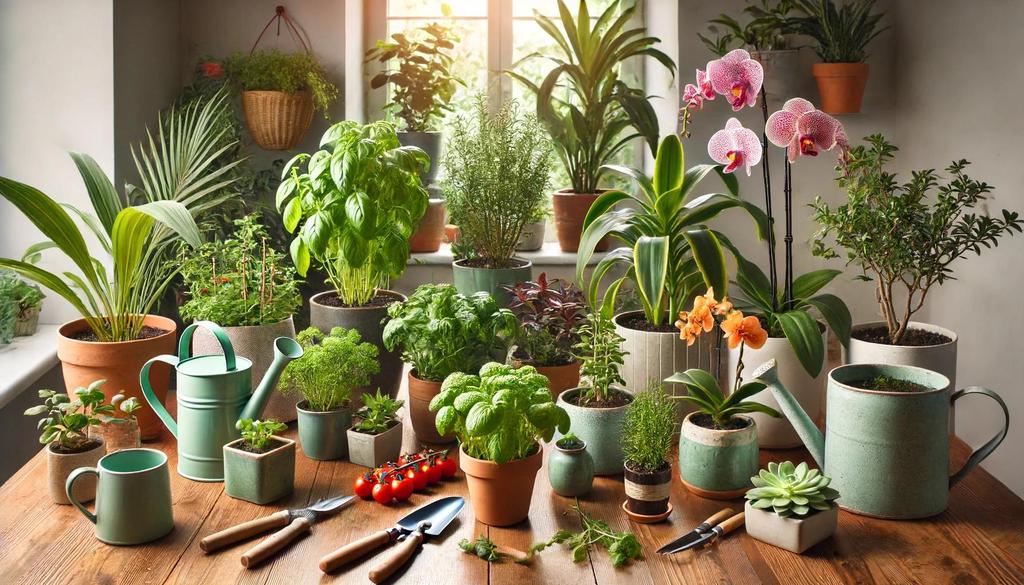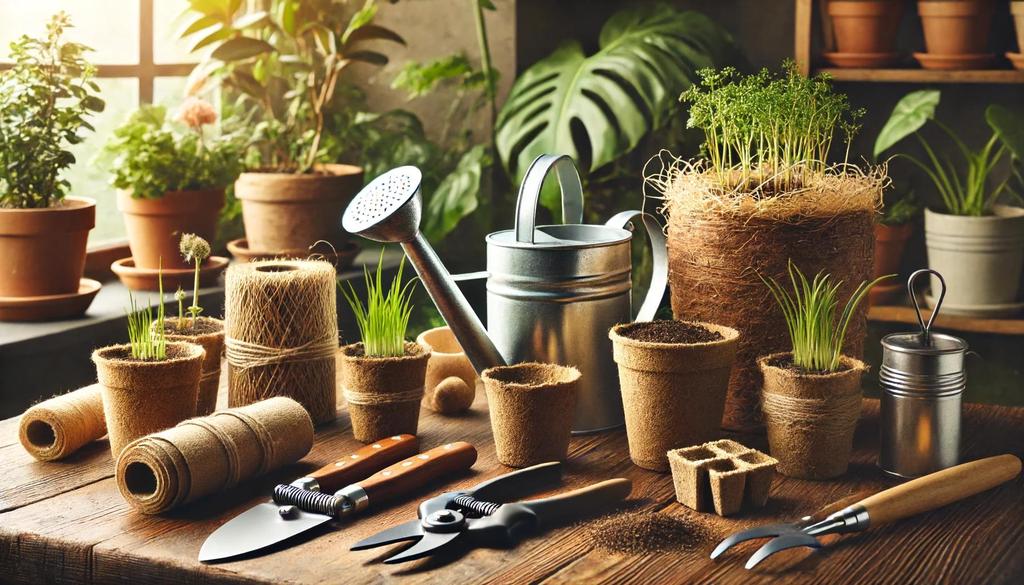We all want to live greener lives. At least, anyone reading this article does. But when you’re living your best city life, how do you manage a garden without any grass in sight?
Indoor gardening is a viable answer to your needs. Whether you live in a high-rise apartment or a quaint townhouse, building a sustainable indoor garden is not only possible but incredibly rewarding. This article covers the essentials for setting up and maintaining your indoor sanctuary, which will provide fresh air and a touch of nature within your home.
Understanding Sustainable Indoor Gardening
Sustainable indoor gardening is the practice of growing plants indoors using environmentally friendly and resource-efficient methods. It can be anything from herbs and veggies to blooming flowers to chill you out and add a touch of nature to your decor.
The best places to find your new garden are online – where you can find everything from seed shops to boutique plant shops. Whether you want to grow tomatoes or are on the hunt for a BloomsyBox plant collection, the internet is your friend.
Principles of Sustainable Gardening Indoors
Now, you need to find the right plants to meet your goals. Do some research on the following:
- Resource Efficiency: Sustainable gardening minimizes the use of non-renewable resources. This includes using energy-efficient lighting and water-conserving irrigation systems.
- Eco-Friendly Materials: Incorporating recyclable and biodegradable materials into garden design helps reduce ecological footprints.
- Natural Pest Control: Using organic pest control methods instead of chemical pesticides keeps the internal environment safe and non-toxic.

Selecting the Right Plants
To create a thriving indoor garden, it’s essential to select manageable plants that provide a substantial harvest. Choose species known for their ease of care and reliable productivity.
- Herbs: Basil, mint, and parsley thrive indoors and can be used in various dishes.
- Vegetables: Spinach, lettuce, and cherry tomatoes are perfect for small-scale indoor gardening.
Plants for Air Purification
Certain plants not only beautify your space but also improve air quality:
- Spider Plant: Known for its air-purifying qualities and low maintenance.
- Peace Lily: It helps remove toxins from the air and requires minimal light.
Aesthetic Appeal Plants
Don’t forget to add some plants purely for their beauty:
- Succulents: These come in various shapes and sizes and are known for their resilience.
- Orchids: They add a splash of color and elegance to any room.
Choosing the Ideal Space
Even the most miniature urban dwellings can accommodate a garden if you:
- Evaluate Light Sources: Check where natural light streams in and plan your garden around these spots.
- Measure Your Space: Knowing the dimensions helps select appropriately sized pots and planters.
Creative Use of Space
Maximize your limited space with these creative ideas:
- Vertical Gardens: Use shelves or wall-mounted planters to grow upward rather than outward.
- Windowsill Gardens: Perfect for herbs and small plants that need ample sunlight.

Essential Tools and Materials
Equip your indoor garden with these essential tools:
- Hand Trowel and Pruner: For planting and trimming your plants.
- Watering Can with a Narrow Spout: This ensures proper watering without over-saturation.
Eco-Friendly Options
Consider these sustainable alternatives:
- Biodegradable Pots: Constructed from materials such as coconut coir or peat moss.
- Compostable Seed Starters: These reduce the need for plastic.
Setting Up the Garden
Follow these steps to create the right environment:
- Clean the Area: Clear away any debris. Also, make sure there is sufficient ventilation.
- Set Up Shelving or Planter Boxes: Arrange them according to your garden layout plan.
Planting the Garden
- Choose the Right Soil: Opt for organic potting soil rich in nutrients.
- Plant with Care: Follow specific planting instructions for each type of plant.
Maintaining the Garden
- Proper Lighting: Use grow lights if natural light is insufficient.
- Consistent Watering: Keep the soil consistently moist, but avoid allowing it to become waterlogged.
Some Final Thoughts on Sustainable Indoor Gardening
Embracing sustainable indoor gardening in urban living is a step towards a healthier, more mindful lifestyle. By selecting the right plants, using eco-friendly materials, and maximizing your space creatively, you can cultivate a thriving green sanctuary within your home.
The benefits of such a garden are plentiful, from improved air quality and aesthetic appeal to the joy of nurturing living plants. Nature’s touch is possible anywhere – even in the heart of an urban jungle. Start small, stay sustainable, and enjoy the lush rewards of your indoor haven.





